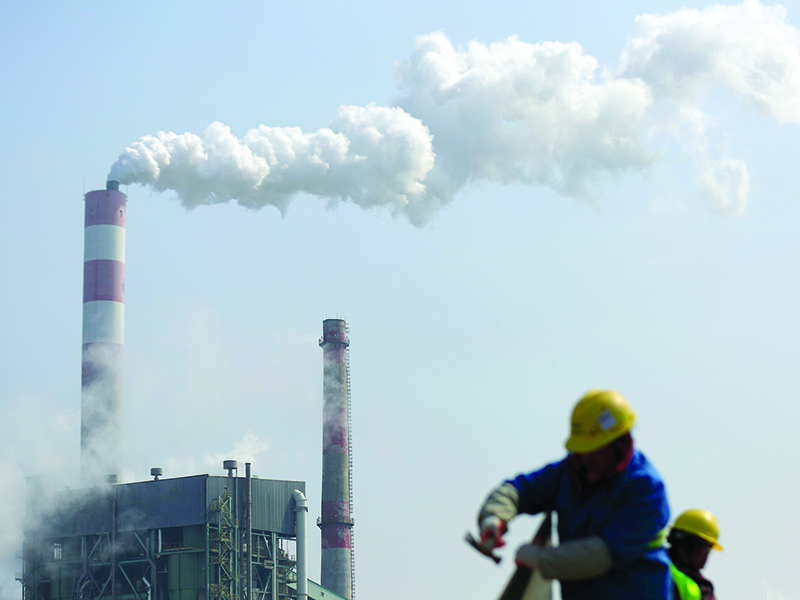

LONDON: For all the commentary around a transition to a clean energy system, the amount of carbon dioxide (CO2) in the atmosphere is still continuing to rise rapidly and shows no sign of slowing down.
climate change targets are slipping out of reach as the concentration of CO2 in the atmosphere continues to march higher, leaving policymakers confronting uncomfortable choices (https://tmsnrt.rs/2VOF00O).
If the concentration continues to rise, policymakers will have to plan for a world with significantly higher temperatures, or rely on untested strategies to remove CO2 from the air later in the century.
Countries that signed the United Nations Framework Convention on climate Change (UNFCCC) have committed themselves to limit the increase in global average temperatures above pre-industrial levels.
Under the UNFCCC Paris Agreement, concluded in 2015, signatories are committed to holding the global average temperature increase well below 2 degrees Celsius and pursuing efforts to limit it to 1.5 degrees Celsius.
Science advisers on the Intergovernmental Panel on climate Change have estimated the limits imply an atmospheric CO2 concentration of no more than 450 parts per million (for 2 degrees) or 430 ppm (for 1.5 degrees).
On current trends, these limits will be reached sometime between the late 2020s and the late 2030s, which leaves less than 10 or 20 years to make profound changes to the energy system and the global economy.
But energy systems are notorious for changing slowly, because they are embodied in long-lived capital investments such as domestic appliances, industrial machinery, power plants, pipelines and transmission systems.
Given the projected life of current equipment and the slow pace of replacement, it is becoming increasingly hard to envisage a scenario in which atmospheric CO2 can be held below 430-450 ppm in the next two decades.
Measurements at Mauna Loa on Hawaii show atmospheric CO2 concentrations have already risen to around 410 ppm in early 2019, up from 387 ppm a decade earlier and 314 ppm in 1958 when the observations began.
Separate sea-level measurements from a network of observatories around the world show atmospheric CO2 concentrations averaged 407 ppm in 2018, up from 385 ppm a decade earlier and 339 ppm in 1980.
Global average CO2 concentrations have risen at an annual average rate of more than 2 ppm, or almost 0.6 percent per year, in the last ten years, according to the U.S. government's Earth System Research Laboratory.
Crucially, the observations show no sign the rise in atmospheric CO2 concentration is decelerating as a prelude to levelling off.
Given the trajectory, CO2 concentrations are almost certain to overshoot the Paris targets set by policymakers - implying average global temperatures will also overshoot both objectives.
Most scenarios envisage CO2 concentrations and global temperatures overshooting for several decades before being brought back towards the target later in the century ("Mitigation of climate change", IPCC, 2014).
Scientific advisers on the intergovernmental panel have acknowledged all pathways to limit global warming to 1.5 degrees in the longer term will require some method to remove already-emitted CO2 from the atmosphere.
Between 100 billion and 1 trillion tonnes of CO2 would need to be removed during the later decades of the 21st century, according to the science panel ("Global warning of 1.5 degrees Celsius", IPCC, 2015).
CO2 could be removed through afforestation and reforestation, land restoration, direct air carbon capture and storage, and other strategies, but none have so far proved commercially viable on anything like the required scale.
In the meantime, the impending overshoot of CO2 targets is a sign of how far off course the energy system is from the objective set by policymakers; how much warming is now likely if things continue on the present trend; and how much effort will have to be made if policymakers want to avoid this outcome. Kemp/ Reuters
Oman Observer is now on the WhatsApp channel. Click here



